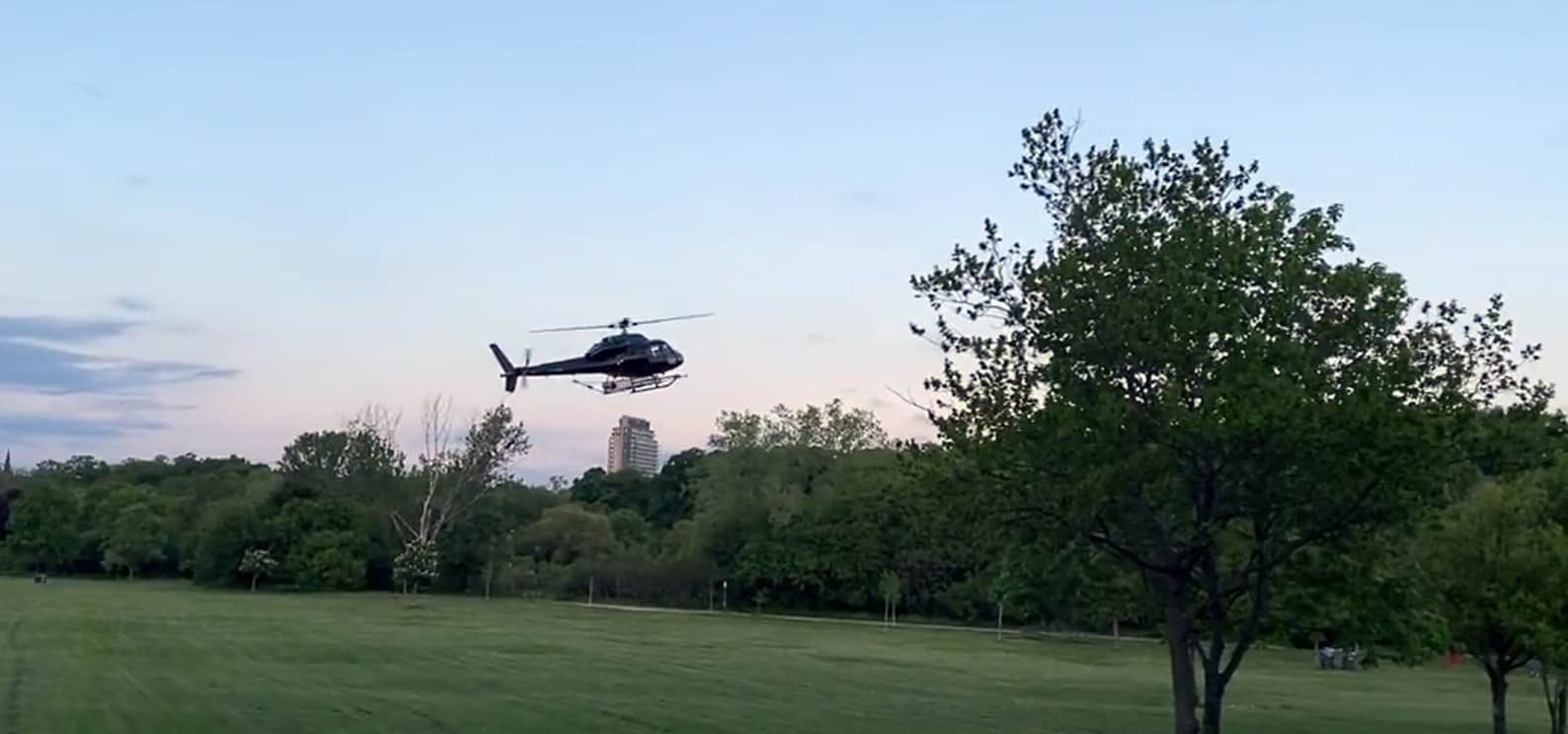Helicopters will spray tree-killing insects in Mississauga again this weekend
Published June 3, 2022 at 4:30 pm

Round two of the aerial spray program will take place in Mississauga again this weekend (June 4 and 5) and on Monday (June 6).
Helicopters will be out beginning at 5 a.m. with the procedure lasting about three hours.
To see if you are in one of the spray zone check the City of Mississauga’s interactive map.
Planned spray zones for Saturday, June 4:
- Spray Zone A
- Spray Zone D (portion)
- Spray Zone E (portion)
Planned spray zones for Sunday, June 5:
- Spray Zone B
- Spray Zone D (remainder)
Planned spray zones for Monday, June 6:
- Spray Zone C
- Spray Zone E (remainder)
This will be the second straight weekend for the air assaults that target the gypsy moth.
Now referred to by its formal name, Lymantria dispar dispar (LDD), officials say the objective is to destroy the insect at its leaf-eating caterpillar stage, which left unchecked can kill trees at an alarming rate.
City officials say it’s important that all Mississauga residents are aware of when, where and how the aerial spray will be used over the next month or so. They add there may be some temporary closures of parks, trails and roads while spraying takes place.
The aerial spray program is expected to protect hardwood trees like maple, oak, elm, ash, poplar, willow and birch.
While the City has used other methods to control the population of the insect, aerial spraying has been determined to be the most effective weapon.
Mississauga forestry staff received $3 million in the City’s 2022 budget with which to stage the latest aerial battle against the hungry pest.
The City last spray-bombed areas in 2018, which helped slow the LDD population for about two years. But within the past year-and-a-half or so, the tree-munching pest has returned in force in Mississauga and across southern Ontario.
The insecticide used is called Foray 48B, containing the active ingredient Bacillus thuringiensis subspecies kurstaki (Btk).
The spray produces fine droplets that are small enough to stick to the leaves of trees. Btk is a naturally occurring bacterium found in soil and has been approved by the Pest Management Regulatory Agency, an agency of Health Canada, for aerial use over urban areas.
According to Health Canada, Btk treatment is considered low-risk to human health and the environment. It is only toxic in the caterpillar stage of the LDD life cycle and does not affect adult moths or butterflies.
Last year, it was determined the “gypsy moth” was also making a nuisance of itself in another way.
People who came into close contact with heavily-treed areas developed rashes, which were not serious in nature, but caused symptoms of slight stinging and itchiness for several days.
Native to Europe, LDD was introduced to North America several decades ago. The caterpillars eat leaves from trees during the spring and early summer.
While healthy trees can grow back their leaves in the same season, an ongoing infestation weakens trees and can make them more likely to be damaged from other insects as well.
INsauga's Editorial Standards and Policies
